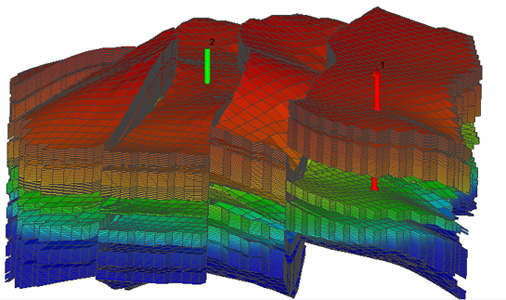| |
| Reservoir Simulation |
| |
Simulation is considered to be one of the most potent tool for reservoir engineers. It is capable of matching the production history and forecast generation. The data required, however, is enormous. For instance, PVT properties, relative permeability curves, reservoir rock properties and more.
Uncertainty in any or each of the parameters can greatly influence the results. History matching is a challenge in itself often achieved sometimes using specialized reservoir simulation software.
The results obtained from analytical tools such as pressure transient analysis, rate transient analysis and material balance help refine the simulation model.
- Estimating initial hydrocarbons in place
- Predicting future reservoir performance
- Estimating water influx
- Analyzing drive mechanism
- Predicting ultimate hydrocarbon recovery under various primary drive mechanisms
The average reservoir pressure can be found from buildup analysis that should be conducted periodically. Few assumptions like constant temperature, constant reservoir volume and pressure equilibrium (all parts of reservoir having same pressure) are made, indicating it to be a useful reservoir engineering tool.
|
| |
 |
| |
| A typical reservoir model |
|
|
l
l
l
l
l
l
l
l
l
l
l
l
l
l
l
l
l
l
l
l
l
l
l
l
l
l
l
l
l
l
l
l
l
l
l
l
l
l
l
l
l
l
l
l
l
l
l
l
l
l
l
l
l
l
l
l
l
l
l
l
l
l
l
l
l
l
l
l
l
l
l
l
l
l
l
l
+
|
|